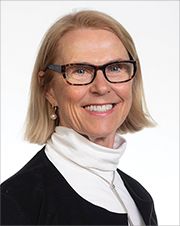Developing a successful career in geophysics today
Format: Virtual Webinar. 45 min. presentation followed by 15 min. Q&A
Please note that two sessions will be given at different dates listed below.
Session 1, Thursday, November 5, 2020, 10 am to 11 am US Central Standard Time
Session 2, Tuesday, December 1, 2020, 3 pm to 4 pm US Central Standard Time
Two live sessions are over. Please scroll down to view the video lectures.
Abstract
Career opportunities in geophysics are changing. Until recently, most geophysicists were hired by the oil and gas industry and worked in acquisition, processing, or interpretation of seismic data. This is no longer true, and today’s students need to be aware of emerging areas in geophysics and how to best prepare in order to be competitive in their chosen subfield. There is the traditional coursework to consider as well as many specialized courses. Artificial intelligence, drone technology, and carbon capture and sequestration are just a few examples of topics that are of increasing interest to society today.
Shaughnessy will discuss emerging areas of geophysics and what is needed to be competitive in each particular field. Successfully completing the geophysics requirement is clearly key for finding a job in geophysics. Extracurricular activities can make your CV stand out from others whether you are opting for a career in industry or academia. Prospective employers will notice achievements such as taking on leadership roles in local geophysical chapters, presenting at geoscience conferences, and completing an internship.
Finding the first job is clearly the first big step. Once employed, the early-career professional needs to understand the importance of proactively navigating his or her path to a successful career. Shaughnessy will review topics such as networking, finding a mentor, being a true team player, and expanding your skills beyond geophysics.
Dual-career families are the norm in today’s world. It presents challenges as well as wonderful opportunities. Shaughnessy will share some practical advice on how to balance your own career, support your spouse’s career, and raise a family.
Your Instructor

Anna Shaughnessy received her undergraduate from the University of Gothenburg in Sweden and her MSc. from the Massachusetts Institute of Technology (MIT). Her industry career started as a geophysical interpreter and quickly moved to management of technical teams within the energy industry. She has held leadership roles in exploration and advanced technology at Mobil, Saudi Aramco, Texaco, and Kerr-McGee. After 30 years in the energy industry, she transitioned to the academic sector. In 2011, she became the executive director of MIT’s Earth Resources Laboratory (ERL). She retired from ERL in 2018 and is currently a consultant. Shaughnessy and her husband, Dan, are both geophysicists and have lived and worked in the United States, Saudi Arabia, and Scandinavia. They successfully managed six relocations with employment opportunities for both in each new location.
Shaughnessy will become President-Elect of the SEG Board at the Annual Meeting in October 2020. Until then she is the vice chair of the SEG Foundation Board (SEGF). The SEGF supports many of the SEG student programs and actively raises funds for existing and future programs. She also has served on many SEG teams including as secretary/treasurer for the Executive committee and on the Women’s Network Committee. In 2019, Shaughnessy acted as interim executive director for SEG for three months while SEG was searching for a new leader. Mentoring young scientists has been a life-long passion for Shaughnessy. She thrives on sharing her enthusiasm for science and technology and guiding others in directions that suit their particular talents and interests. Her wide work experience has offered her a great appreciation of geophysics’ role during the past 40 years. Her unique background and experience provides her with unusual insights into the role of applied geophysics in industry, academia, and society today and in years to come.
